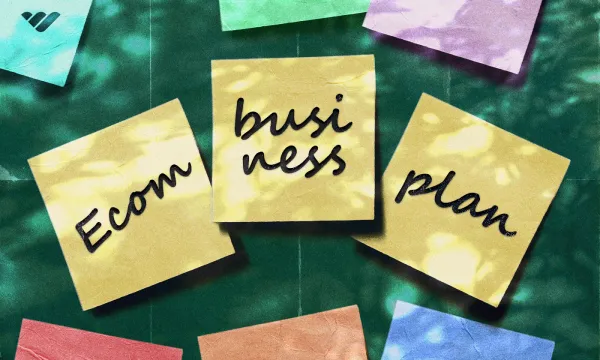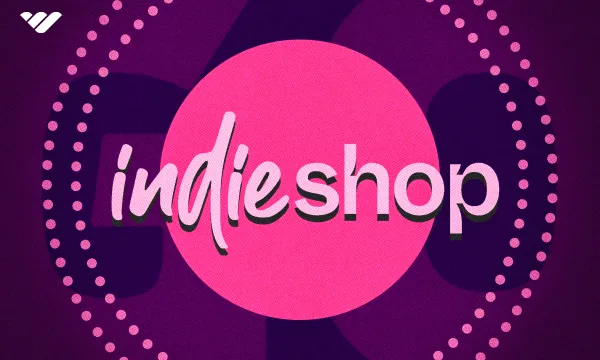If you’re thinking about launching an ecommerce business or taking your current venture to the next level, a great business plan can help you in several ways. From upping your chances of getting increased funding to simplifying the decision-making process, an ecommerce business plan might be what you need to step up to the next level.
This guide demystifies ecommerce business plans, and will help you create one for your business!
What is an Ecommerce Business Plan?
An ecommerce business plan is a document that defines your business and lays out its goals, provides data and analysis around the industry you’ll operate in and who your competitors are. It also details what you need to execute your objectives in terms of investment and resources, as well as what your ecosystem of partners and supporting services will look like.
Having this document will help you validate your business idea and plan your next steps in detail, while also serving as a concrete piece of evidence that you can put in front of potential business partners and investors—in fact, studies have shown that having a formal business plan can actually boost your chances of success.
If your ecommerce venture is still in formation or it’s a side hustle that you think could turn into a full-time business, a good business plan will paint a clear picture of how viable it is and what sort of risks are involved. At the very least, this’ll give you some peace of mind as you prepare to take the leap!
Benefits of Creating an Ecommerce Business Plan
When you come up with a formal business plan, it gives you a chance to go through your business ideas with a fine-toothed comb. You’ll find yourself identifying weaknesses in your plans and remedying them, and it gives you an excellent opportunity to fill in any gaps you might have left in your planning.
Ultimately, a business plan helps to lay out a clear path forward and make the decision-making process easier. It’ll let you plot your way through those crucial early stages of business, and make the most of your starting capital.
Step-by-Step Guide to Creating an Ecommerce Business Plan
Now that you know how and why an ecommerce business plan can benefit you, let’s get right on with how to create one!
#1. Draft Your Executive Summary
An executive summary gives the reader a clear but concise way to understand your business plan, and while it has a broad remit doesn’t need to be any longer than a couple of pages. The ideal executive summary will take the reader through several clear areas, including:
What Your Business Does
This section’s right on top because it’s important—this is where you get to state the entire basis of your ecommerce venture, from the business opportunity you’re positioned to take advantage of to how exactly you plan on doing so, along with what the existing business landscape looks like. Here’s a detailed glimpse of what you ought to put down.
- Problem statement
This is where you get to outline exactly what sort of market gap you’re going to fill. Be as detailed as possible here—if you’re going to show your business plan to investors or partners, this is something they’ll need to be sold on. - Business idea
Now you can describe how you’re going to go about filling that same market gap, solving the problem from the previous step. - History to date
If you’re already doing business or have some experience in the area, you can detail where your company is at right now. - Market analysis
In this section, you can describe the market relevant to the problem you’re solving, including the market sizing and trends in the industry you’re looking at. - Competitor analysis
It’s likely that there are already some players in your niche even if it’s a fresh opportunity, so outline what they do and don’t do well here as well as how your ecommerce business will differentiate itself. - Projected milestones
In this section you can look forward, projecting your path forward a few years and outlining any significant plans. Include things like entering adjacent markets or new geographies, going public with an IPO, and so on. - Financial plan
Here you can provide details about your financial situation, including what sort of funding you might need to realize your plans. This one’s crucial if you’re going to be doing any fundraising.
Your Business Goals
Now that a lot of the key information is out of the way, your executive summary can move on to the different short, medium, and long-term goals of your business. If you’re not sure exactly what sort of goals to include here, don’t worry—they can be as high level or detailed as you wish. As long as your goals are realistic and achievable, you can set them down here.
The Makeup of Your Team
One of the most crucial things that investors especially want to see from your executive summary is the makeup of your team. It’s likely that you’re the company owner and plan on holding the chief executive role, but list whoever else you’ve got in your corner and identify their exact roles. If you have people earmarked for those spots but they’re not on board yet, note that down too—once you’re up and running, having the right team is vital, so this section of your executive summary can serve as a reminder of their importance.
Your Ideal Customer Profile
The next element in your executive summary needs to be your target customer or audience profile. Not having an understanding of their ideal customer is one of the most common mistakes entrepreneurs make, so it’s well worth putting the research in. Through this section, you can show that you understand your customer not just through a demographic lens, but also in terms of what really drives them and makes them tick.
From a demographic perspective, you’ll want to build a profile that includes their age and location, gender, relationship status, and crucially, information revolving around their education level, occupation, and income. On top of that, psychographic data includes things like interests, hobbies, attitudes, behavior, and values. Put together, all of this data will help you understand how to best sell your product to your customers.
What You Sell and Where
Last but definitely not least, make sure to include details about your products and through which platforms or channels you plan on putting them in your customers’ pockets. You’ll also need to touch on your supply chain here, describing exactly how you’re going to source your products and what the logistics of the operation will look like.
It’s also important to underline your value proposition in this section. You already described how your business will differ from your competitors, but here you can go into more detail about why your customer is likely to choose your product over those from another brand. You can also touch on your revenue model here, as well as any intellectual property issues that may come up.
#2. Define Your Company
Once you’ve got your executive summary sorted out, it’s time to go into detail about the various aspects in that section, starting with your company itself—this is where you can start to tell the story of your company and brand.
Name and Branding
You might already have a company name in mind here, but it’s worth taking a moment and thinking about it a bit longer. It’s really difficult to change the name of your brand once it’s up and running with an established audience, so it’s one of those things you’ll want to get right from the outset—and it’s well worth doing so, given how powerful a catchy brand name is.
There’s also the consideration of domains and websites when it comes to branding. You’ll need a significant online presence for your ecommerce startup, and that means at least one main website and multiple social media accounts. Make sure you can actually get yourself a domain that makes sense—many entrepreneurs have had to make embarrassing U-turns on branding after finding out that they couldn’t acquire a domain matching their company name.
You can also use an online generator to come up with a brand name if you’re struggling for inspiration. Whop, for example, has a handy brand name generator for you to use when you create a digital store on the platform!

Company Structure
One big consideration when setting up your company is the legal structure of your business. Sure, you can go ahead and start up an ecommerce store as a private individual, but that can have several disadvantages including the fact that you’d take on all business liabilities yourself.
So, spend some time figuring out whether you want to stay as a sole proprietorship or whether it’s worth switching to a structure like a partnership, S-Corp or LLC. The structure you choose will affect the administrative side of your business quite a lot, but the benefits might outweigh the added work. If you want to know about LLCs, one of the most popular structures for creators and entrepreneurs, check out this guide.
Vision and Mission
The last key element of this section is detailing your company’s vision and mission. All successful companies do this, and it can serve as a guiding light or set of principles to follow as you go.
Your vision statement will look at why your company exists and summarize its philosophy into a neat phrase, while your mission statement encapsulates more achievable goals. For example, Google’s vision statement is “to provide access to the world’s information in one click” while its mission is to “organize the world’s information and make it universally accessible and useful.”
#3. Assess the Competition
Not many successful entrepreneurs have ever described their entry to a market as “just winging it”, and it pays to analyze the industry you’re going into in minute detail. All of this research can then go into your ecommerce business plan, because it’s going to underpin exactly how you operate, especially in the early stages of doing business. There are several elements to this:
Market Analysis
We’ve already mentioned the importance of creating a customer persona or profile in the executive summary, and you can take that a bit further here along with an in-depth analysis of the market itself. One of the big things you’re looking for is the total addressable market size, which you can grab from a variety of market research providers. Size your market, then drill down and see what proportion of that market fits in line with your ideal customer, and work from there.
Competitor Analysis
Now that you know all about the market, it’s time to look at the other players. Identify who your potential competitors are, direct or indirect, and figure out what exactly they’re doing in terms of market segmentation, product ranges, pricing strategies, and generally why customers buy from them.
You can also get as hands-on with this research as you want—if it’s doable, you might even consider visiting your competitors’ digital stores and going all the way through with a purchase to understand exactly how they do things. This’ll help you understand weaknesses and gaps in their approach, whether it’s design, pricing, UI, customer service, or anything else.
Your USP
Armed with all of this analysis, you should now be able to set out exactly what makes you different and how you’ll go about solving the market’s problems. You can fit your products into areas or price tiers that your competitors don’t serve, or build out a brand identity serving different segments.
#4. Create a Marketing Plan
All of the research and analysis you’ve done up to this point will now help you craft a go-to-market approach and marketing strategy that best utilizes what you know about the market and your customers. You’ll need to build awareness about your business and leverage social media, and this section will go into detail on all of that.
Choose Your Channels
With all of your information gleaned pertaining to your target customer, you should be able to decide what marketing channels match them best. If you understand what their day looks like, you can figure out where to target them—are they more likely to check Facebook frequently or do they doom-scroll Reddit? Simply insights like that can help you pick the right channels.
Once you know where your customers are, you can decide on your marketing mix. Even with paid advertising, there are so many options to choose—PPC ads on your customers’ platforms of choice could work, but don’t discount options like influencer marketing. A coupon given to the right social media personality could go a whole lot further than a Google ad, for the right customer profile.
Organic marketing is also worth thinking about and building into your ecommerce business plan. If you’re able to optimize your website, digital store pages and social media posts for search engines you’ll be seen by lots more customers without having to spend any extra—although you may want to invest in areas like content marketing rather than doing it all yourself.
#5. Get Serious About Your Financials
Finally, your ecommerce business plan needs to contain accurate financial information. This can give you a great idea of what’s possible and what’s not if you’re just starting out, and as your idea gets more fleshed out it’ll be something you leverage hard when it comes to investment. There will be at least three documents you need to populate this section with:
Income Statement
This document projects (if you don’t already have a running business) your revenues and expenses across a certain period. This document is crucial because it shows your profitability, also known as the bottom line. You may not expect to make a profit immediately, especially if you need significant starting capital, but you’ll want to show a profit before too long.
Balance Sheet
This document looks at your assets, equity and liabilities, essentially giving you a picture of your company’s net worth. Whatever things of tangible worth your company owns goes down as assets, your liabilities are things like business loans, and the difference is your shareholder equity.
Cash Flow Statement
This final document helps you understand the level of cash generation and usage for your business across a given period of time. It’s especially important because your business will need cash to survive—it’s all well and good having some hefty entries in accounts receivable, but you’ll need cash to pay for various expenses including whatever salary you take from the business!
Ecommerce Business Plan Best Practices
Drafting a formal business plan isn’t quite kids play, but getting it right can be extremely positive as you move forward with your ecommerce business. So, here are some tips to help you create the perfect ecommerce business plan!
SWOT
One of the most powerful analysis tools and also extremely easy to do, a SWOT (strengths, weaknesses, opportunities, threats) can really help to pinpoint key areas both in terms of your own company as well as your competitors. A competitor SWOT can help you identify things that they’re doing right that you can emulate as well as negative aspects and weaknesses that you can correct and even capitalize on with your own.
Concise Plan
As much information as you’re packing into this ecommerce business plan, you’re best off keeping it as concise and clear as possible. Too much content will make it hard to read, and potential partners and investors might not glean the information you’re trying to convey if it’s too wordy or packed with jargon. That being said, don’t prioritize “short” over “effective”. If there are appendices or especially images that can help, don’t worry about including them and bloating your page count.
Clear Objectives
Clarity is just as important as being concise, and if you develop your business plan with clear objectives and checkpointed milestones, you’ll do well. Your company isn’t going to take over the world on day one, so be realistic, and plot out your path step by step in the business plan.
An Example of a Great Ecommerce Business Plan
This sample ecommerce business plan for a company called 'My Grocery Needs' is an excellent example for you to follow because it features all of the different elements we’ve gone through in this guide. It starts off with a two-page executive summary, pictured below:
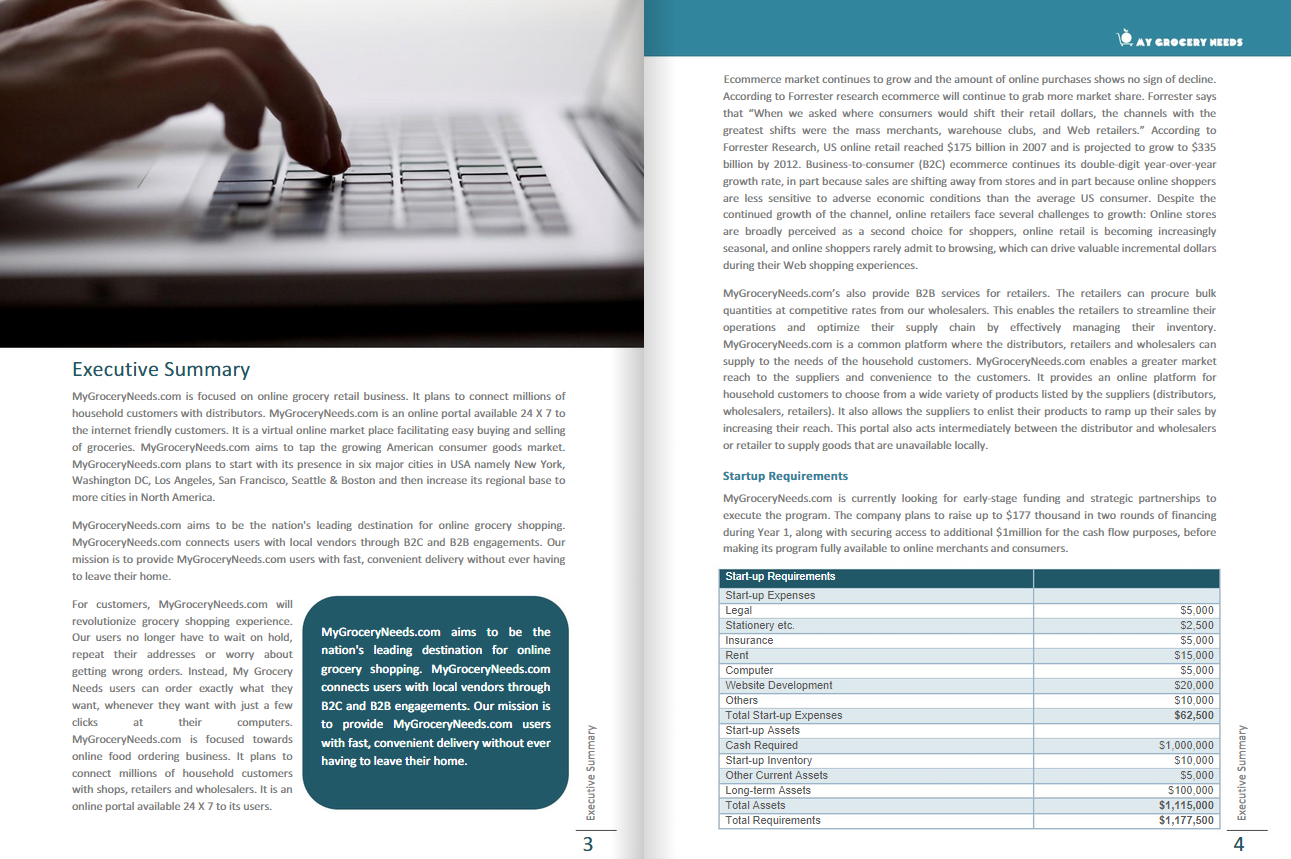
It might look a little long at 58 pages, but a lot of information is conveyed via imagery and graphical representation.
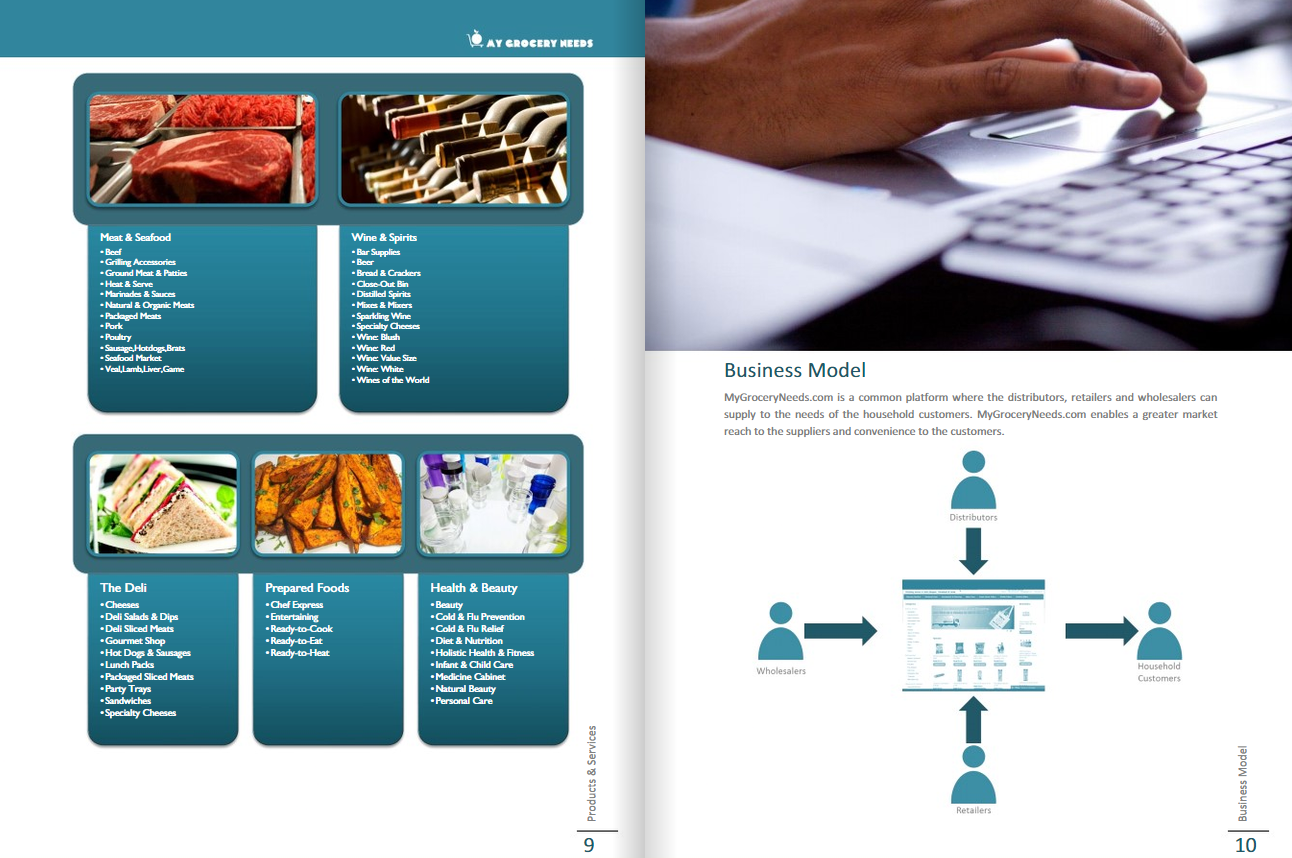
The plan also goes into extensive detail with its research, including multiple tables on market research and a section exploring the total addressable market.
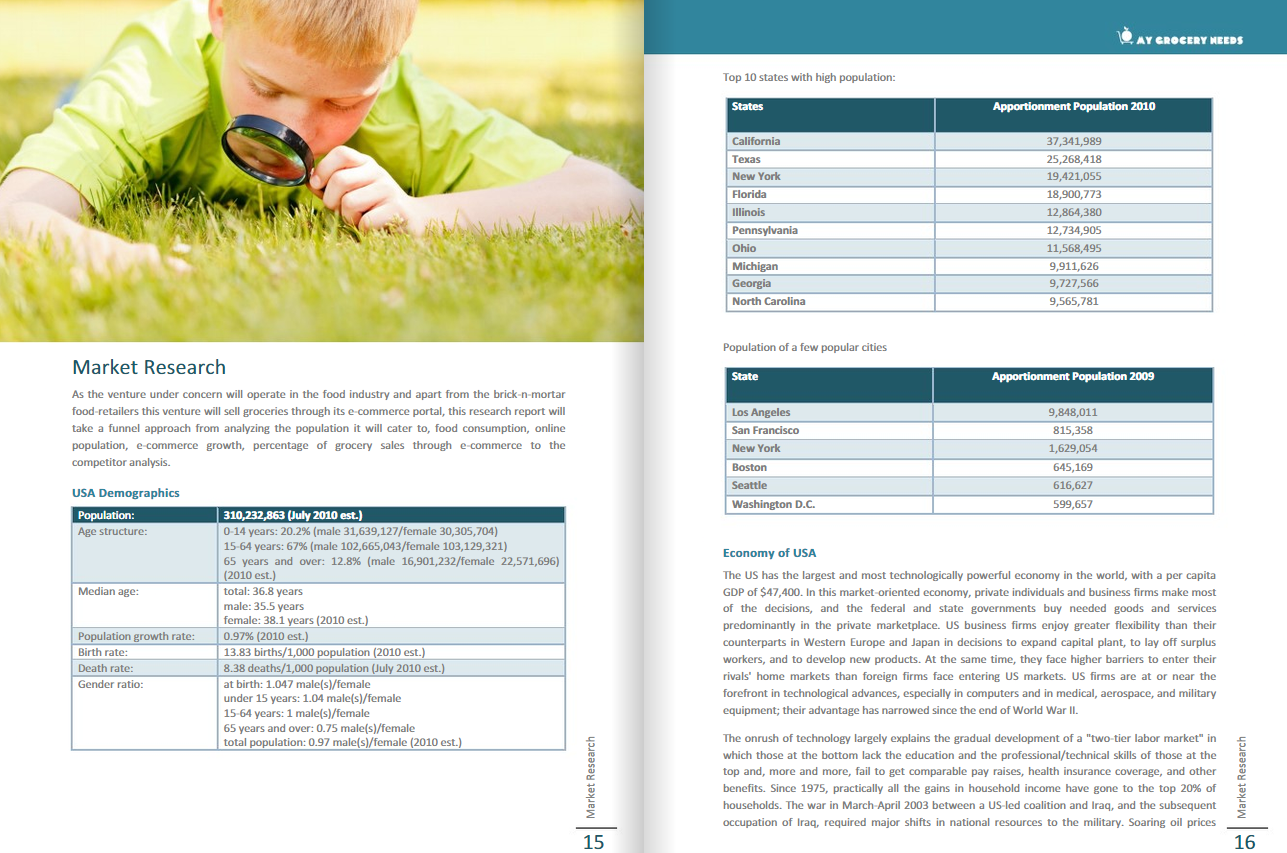
It also features multiple analyses, including SWOT, and generally covers all of the advice we’ve given you in this guide.
Scale to New Ecommerce Business Heights with Whop!
If you want to get serious about your ecommerce business and maximize its potential, drafting a great business plan is only the first step. You need to start getting all the pieces in place, from the right platform to sell from and help you with marketing, all the way through to the fulfillment of your digital goods.
So, do yourself a favor and check out Whop! Whop has everything you need to manage a successful ecommerce business, from opening you up to new customers, to taking care of fulfillment, providing best-in-class customer service, and lightening your own workload to allow you to focus on your product. Get in touch with the team or visit Whop today.
